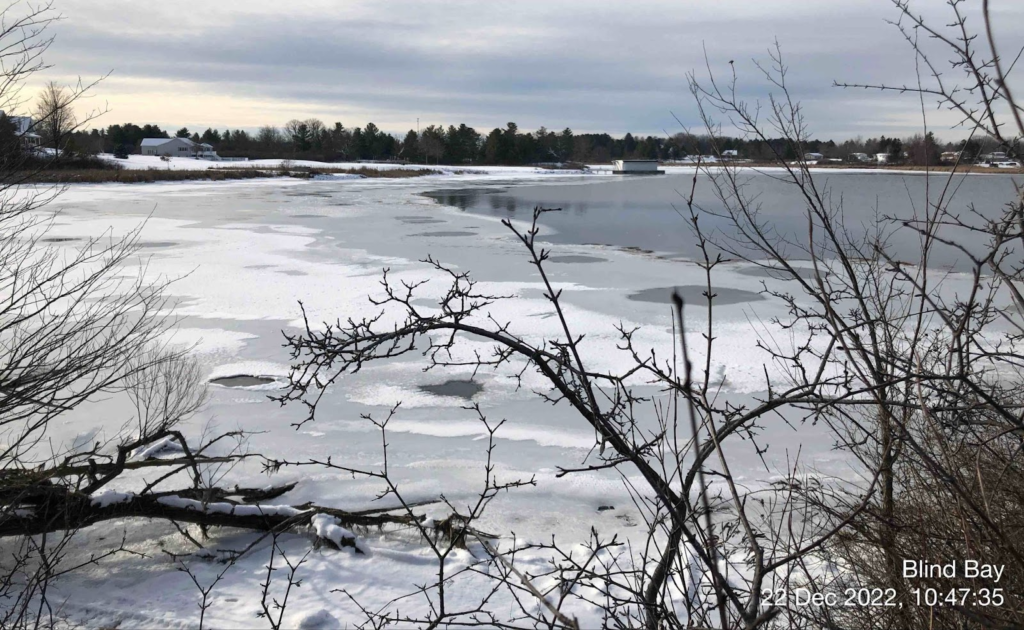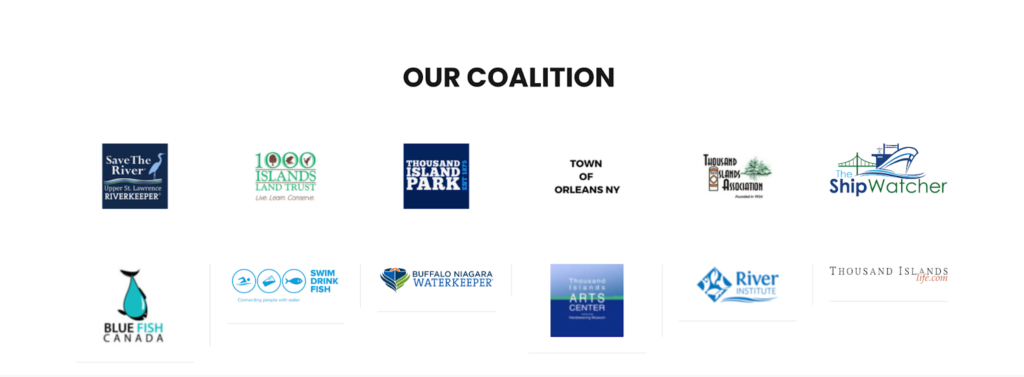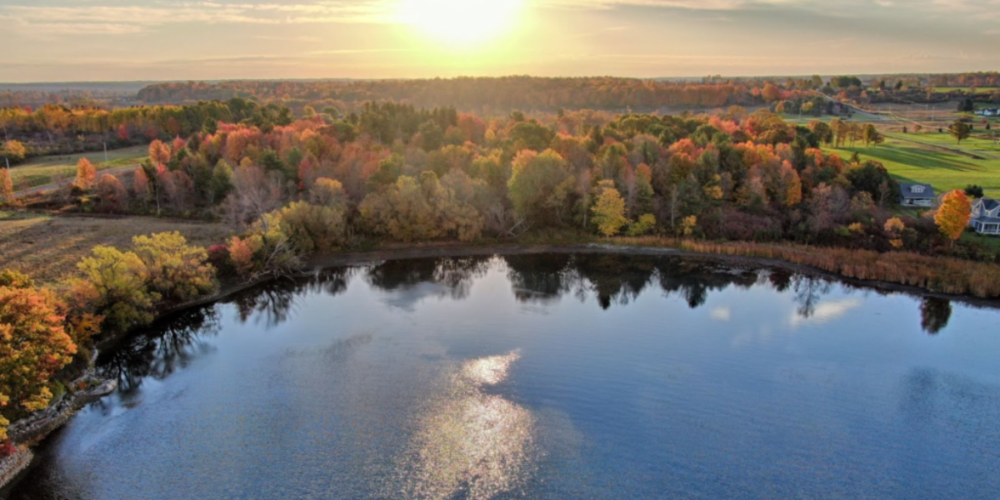
Photo by Chris Murray Photography
Last year, the River community took urgent action to protect a special place in danger of being changed forever. After learning of Customs & Border Protection’s (CBP) plan to construct a new Border Patrol facility in the heart of the Thousand Islands, the River community stepped in to help prevent what could only be described as an unprecedented loss to our St. Lawrence River ecosystem. Numerous elected officials, regional agencies, and non-profit environmental organizations voiced opposition to CBP’s proposed facility in Blind Bay including U.S. Senator Chuck Schumer, U.S. Congresswoman Claudia Tenney, NY Senator Mark Walczyk, NY Assemblyman Scott Gray, Jefferson County Legislator Phil Reed, Thousand Islands Park Association, NYS Department of Environmental Conservation Region 6, SUNY ESF Thousand Islands Biological Station, Town of Clayton, and Town of Orleans. In addition, over a thousand members of the River community submitted public comments encouraging CBP to seek alternative sites.
Concerns surrounding the new Border Patrol facility, in this location, reinforced the importance of being proactive in protecting lands critical to the health of the River, a thriving local economy, and the region’s overall quality of life. The construction, operation, and maintenance of the proposed facility would pose permanent, adverse ecological impacts to Blind Bay and the greater Thousand Islands. Furthermore, it would undermine the Thousand Islands Land Trust’s (TILT) and the federal government’s existing investments in the adjacent conserved land. The cumulative environmental consequences of habitat fragmentation, edge encroachment, migration barriers such as perimeter fencing, high-density light pollution, and wetland degradation associated with such a facility would have lasting impacts that reach far beyond its boundaries.
In November, the Land Trust officially acquired the 22-acre property. A true environmental treasure, Blind Bay is not only a historic breeding ground for muskellunge and 53 additional fish species, it also is home to numerous mammal and bird species that are characteristic of the Thousand Islands. “TILT focuses on the conservation, protection, and restoration of the environmental integrity and water quality of the Thousand Islands and St. Lawrence River Valley regions,” stated Jake Tibbles, TILT’s Executive Director. “By conserving over 12,500 acres of critical habitat TILT is supporting a variety of threatened and endangered species and has a substantial, vested interest in protecting the environmental character of Blind Bay and the broader River region.”
Since the acquisition was finalized, TILT and Save The RiverⓇ Upper St. Lawrence RiverkeeperⓇ (STR) have been focused on developing a long-term conservation plan for Blind Bay. Recently, the organizations hosted a group of Scouts from Fort Drum. As part of our Blind Bay Stewardship Day, the group installed wood duck boxes and a variety of songbird nest boxes. “Blind Bay is an important community project, and we want children to get out on the Preserve so that they can learn the importance of protecting our region’s most important natural resources,” stated Shannon Walter, TILT’s Education & Outreach Coordinator. The Scouts reveled in a unique firsthand experience by engaging with the land and contributing to the critical stewardship of wildlife habitat. “Educating the next generation on what the Blind Bay Preserve provides is a big step in our advocacy. It’s imperative that our youth become the stewards of Blind Bay, the stewards of the broader Thousand Islands region,” added Robin Hall, STR’s Education Coordinator.

For the last several months, the Blind Bay Coalition has been working with elected officials and community leaders to help identify alternative sites for the proposed Border Patrol facility. “While the Blind Bay Coalition is opposed to CBP siting the new facility in and around Blind Bay, it understands the important role the Agency plays when it comes to homeland security and protecting our nation’s borders,” Tibbles said. “That’s one of the reasons why we have offered to assist CBP with the environmental evaluation of alternative sites.”
A proposal by the Town of Alexandria to locate a new Border Patrol facility at the former Bonnie Castle Recreation Center was sent to CBP last year. The Recreation Center, located on Route 12 and adjacent to I-81, addresses CBP’s need to access these two main highways to improve their response times to incidents and provides agents quicker access to patrol and surveillance areas.
“As highlighted in recent news articles, the Bonnie Castle Recreation Center offered by the Town of Alexandria seems to address Customs & Border Protection’s needs, at the same time, avoids negatively impacting the environmentally sensitive Blind Bay,” explained Phil Reed, Jefferson County Legislator. “This proposal looks to have the support of the local community and many elected officials.”
The Recreation Center provides adequate space for station siting, access to municipal water and sewer, and offers zoning that is compatible with the proposed facility. In addition, the Center is already off the tax rolls and is in close proximity to convenient boat access. “Interestingly, by photo documenting the ice cover in and around the various areas that we believe CBP is considering for the new facility, Blind Bay is by far the first to ice-up and the last to see ice-out,” stated Reed. “This could significantly impact CBP’s response time during spring and fall months.”

Moving forward, the Blind Bay Coalition plans to keep the River community informed on any developments pertaining to CBP’s proposal. It also plans to continue working with elected officials and proactively engaging CBP. “Considering our long-standing relationships with the River communities and deep knowledge of the region’s complex ecosystems, Coalition partners are uniquely positioned to work with CBP to avoid other sites that may be equally or more sensitive than Blind Bay,” described John Peach, STR’s Executive Director.
Following the structure of STR’s Trash Free River program, TILT and STR have scheduled a shoreline clean-up for shallow waters of Blind Bay. This spring, teams will use kayaks, tall rubber boots, nets, and trash grabbers to remove trash and debris from the shoreline and adjacent wetlands and woods. Last year, staff filled contractor bags full with a variety of polystyrene fragments and single-use plastics. STR has been cleaning up stretches of shoreline and boat slips for several years in an ongoing effort to make the St. Lawrence River “swimmable, fishable, and drinkable”.
“The problem of trash in the water of the St. Lawrence River has been well documented and can be observed on a daily basis by islanders and boaters,” stated Lauren Eggleston, STR’s Assistant Director. “Removing plastics and other man-made debris from the St. Lawrence River is a pressing concern and by doing so will ensure that sensitive habitats, like those found in Blind Bay, stay clean and vibrant.”

Pictured left to right: Kate Breheny, Spencer Busler, Caryn Clements, Jake Tibbles, Terra Bach, Chelsea Broughton, Shannon Walter, and Lauren Eggleston
Echoing these concerns for biodiversity, Spencer Busler, TILT’s Assistant Director stated “Over the coming months, mink will scurry along the rocky shoreline looking for food to feed their young and the sounds of our beloved loons will echo across the Bay. When combined with the existing conservation lands, over 36 acres of mixed forest and grasslands and over 835 feet of undeveloped coastal shoreline are now under permanent protection, providing a safe haven for our local wildlife.”
“The preservation of one of the most prolific muskellunge spawning areas in the Upper St. Lawrence is very important to the survival of the apex predator in the River. Save The River (STR) applauds TILT’s bold initiative in protecting this critical habitat that is essential to support biodiversity in the River and along its shorelines,” commented Peach. “TILT’s commitment to conserving critical environmental habitat combined with STR’s advocacy on behalf of the River has made the protection of Blind Bay possible. It’s an excellent example of advocacy and conservation working hand in hand for the long-term benefit of our region.”
This summer TILT and Save The River plan to hold additional environmental education programs and continue their support of the Thousand Islands Biological Station’s Muskellunge Population Restoration Program. The two organizations also plan to host a community gathering to raise funds for the long-term conservation and legal defense of Blind Bay.
For more information regarding efforts to protect Blind Bay, visit saveblindbay.com.




